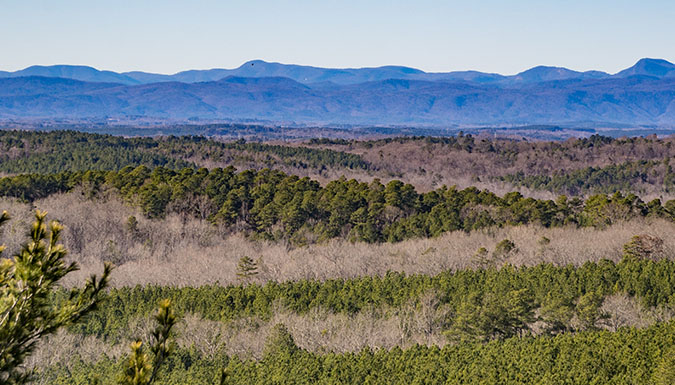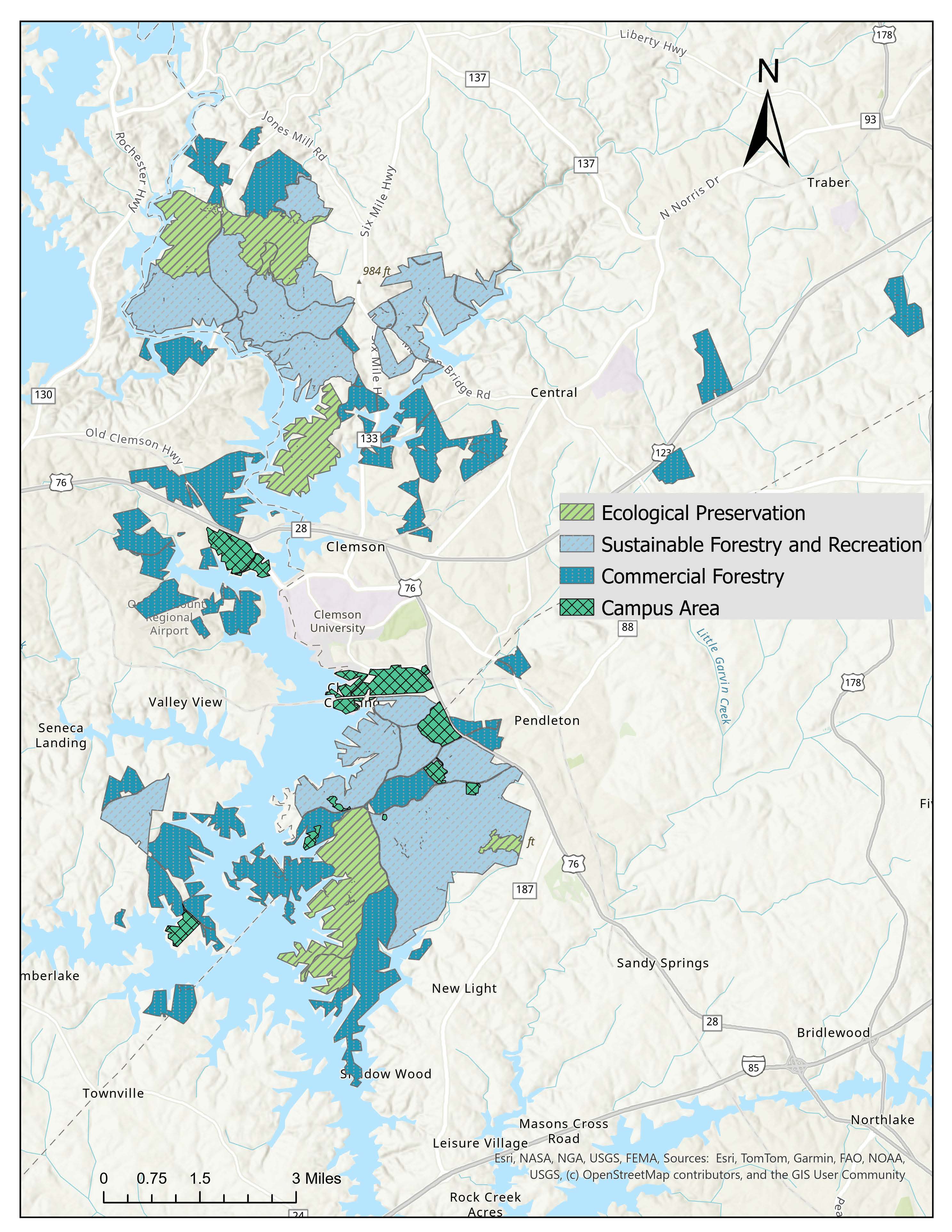Conservation Zones and Management Priorities
The Clemson University Forest is divided into four Conservation Zones, each with distinct goals for conservation, recreation and responsible land use.
These zones guide how we manage the Forest to ensure it serves as a living laboratory, outdoor classroom and resource for future generations.

Level 1: Ecological Preservation (3,264 acres)
Primary Focus: Restore and protect ecosystems with high conservation value.
Level 1 areas are managed to maintain ecological integrity and support biodiversity. Forestry practices are designed to restore natural systems and processes. Key management strategies include:
- Thinning to promote multi-aged, multi-species stands
- Prescribed fire to support ecosystem health
- Removing invasive species
- Enhancing habitats for species of conservation concern
- Protecting wetlands, riparian zones, deadwood and snags
- Allowing natural disturbances—like fire, flood or disease—when safe
Low-impact, backcountry-style recreation is allowed as long as it aligns with ecological goals.
Level 2: Sustainable Forestry and Recreation (8,098 acres)
Primary Focus: Balance responsible forestry with active recreation.
These areas are managed for both ecological health and public use. Priorities include:
- Expanding and improving recreational infrastructure
- Applying forestry practices that avoid conflict with recreation
- Maintaining Level 1 ecological priorities where possible
- Allowing revenue-generating forestry, such as selective harvesting or disease control, when guided by Best Management Practices (BMPs)
These zones welcome a wider range of outdoor activities while protecting forest health.
Level 3: Commercial Forestry (6,985 acres)
Primary Focus: Generate revenue through working forest practices.
Level 3 zones are managed primarily for timber production. Forestry activities follow BMPs and consider environmental impact. Priorities include:
- Conducting commercial forestry operations with ecological awareness
- Maintaining existing recreational use where it doesn’t interfere with management goals
- Upholding Level 2 ecological standards as feasible
These areas help sustain the Forest’s long-term operations and mission.
Level 4: Campus Expansion (769 acres)
Primary Focus: Prepare for future university growth.
These areas are part of Clemson’s Campus Long Range Plan and will be managed with development sensitivity. Priorities include:
- Preserving aesthetic value
- Coordinating with campus planners to guide land use
- Supporting interim forestry that aligns with future plans
This zone reflects the Forest’s role in Clemson’s future—balancing growth with stewardship.

This map shows the four Conservation Zones of the Clemson University Forest: Level 1 (Ecological Preservation), Level 2 (Sustainable Forestry and Recreation), Level 3 (Commercial Forestry) and Level 4 (Campus Expansion).

